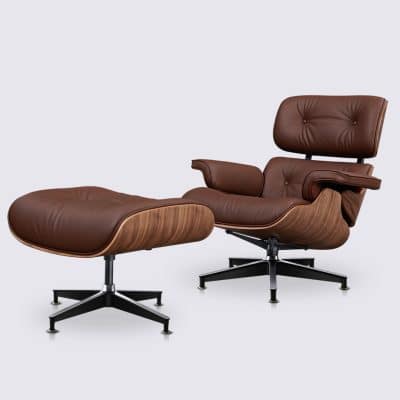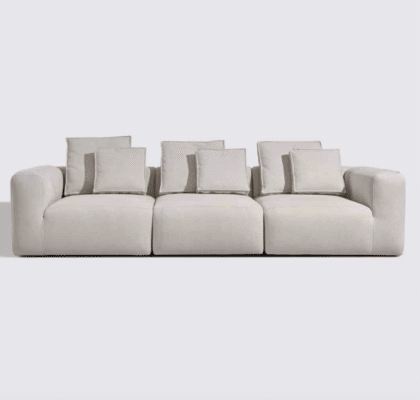
How to clean your leather armchair? Maintain your leather armchair to preserve its elegance and
⚡ Special deals before new collection
⚡ Special deals before new collection
The Berber carpets are renowned for their beauty and craftsmanship. These rugs, often associated with Moroccan tribes, are distinguished by their unique patterns and soft texture. They are generally made from natural materials that contribute to their durability and aesthetic appeal. Understanding the composition of these rugs is essential to caring for them properly and preserving their appearance over time.
A Berber rug is much more than a simple decorative object. It’s a piece of cultural heritage that tells a story through its patterns and colors.
Wool is the main material used to make Berber rugs. It is prized for its softness, warmth and natural resistance. Berber rugs may also contain other natural fibers such as cotton or even linen, adding to their texture and durability. The quality of the wool used plays a crucial role in the rug’s longevity, making regular maintenance even more important.
Another feature of authentic Berber rugs is the use of natural dyes to dye the wool. These dyes, often extracted from plants, minerals or even insects, offer a rich and varied palette of colors.
To identify an authentic Berber carpet, it’s important to pay attention to the details. A genuine Berber carpet usually features asymmetrical patterns, an indicator of its handcrafted origin.
What’s more, the bangs at the ends of the rug are often left unfinished, a testament to its authenticity. Machine-made rugs, on the other hand, tend to be perfectly symmetrical and uniform.
Another indicator of authenticity is the texture of the carpet. A genuine Berber carpet is often thicker and denser, due to the wool used.
Color variations and small imperfections in the pattern are also signs of handwork. By taking the time to examine these features, you can avoid counterfeits and invest in a quality rug.
The wool used in Berber rugs offers many advantages. It is naturally resistant to stains and wear, making it an excellent choice for high-traffic areas. What’s more, wool has insulating properties, helping to maintain a comfortable temperature in your home. It’s also hypoallergenic, making it ideal for allergy sufferers.
Another major advantage of wool is its ability to absorb and release moisture, helping to regulate ambient humidity. This means that your Berber rug will remain cool and pleasant to the touch, even in varying climatic conditions.
Cleaning a Berber rug requires specific techniques to preserve its beauty and quality. Because of their delicate construction, Berber carpets must be cleaned with care to avoid damaging the fibers or fading the colors. Regular maintenance is essential to prevent the accumulation of dust and dirt, which can dull the rug’s appearance.
To remove dust and dirt from your Berber carpet, we strongly recommend using a vacuum cleaner in gentle brushing mode, if possible. This will dislodge embedded particles without damaging the carpet’s delicate fibers.
We recommend vacuuming at least twice a week to keep the carpet clean and prevent dirt build-up.
When vacuuming, avoid rubbing too hard to avoid damaging colors and fibers. Instead, use gentle, even strokes for effective cleaning. If your carpet is old or new, it’s best to avoid brushing altogether to prevent linting and preserve the integrity of the fibers.
Stains on a Berber rug must be treated quickly to prevent them from becoming embedded. For light stains, a clean, damp cloth may be all that’s needed to remove them. Gently dab the stain without rubbing to absorb the liquid and avoid spreading it.
For more stubborn stains, a thorough cleaning may be necessary.
To avoid damaging the fibers, we recommend using cleaning products specially formulated for wool. Always test the product on a small, inconspicuous area before applying it to the stain.
Regular maintenance is the key to maintaining the appearance and durability of your Berber carpet. In addition to frequent vacuuming, deep cleaning should be carried out periodically. This can be done manually or with steam, depending on preference and the condition of the carpet.
For preventive maintenance, avoid placing your carpet in areas exposed to direct sunlight, as this could discolor the fibers.
For optimum care of your berber carpet, it’s essential to use the vacuum cleaner correctly. As mentioned above, a gentle brushing mode is ideal for removing dust without damaging the fibers. Be sure to set the vacuum cleaner to a power level suited to the fragility of the wool.
Avoid using brushes that are too hard, which could damage the softest strands of wool. Take the time to vacuum in a variety of directions for thorough cleaning.
When cleaning your Berber carpet, certain precautions must be taken to avoid damaging the fibers. First of all, avoid using harsh chemicals that could alter the carpet’s color and texture. Instead, use gentle, natural solutions adapted to wool.
If you opt for steam cleaning, take care not to saturate the carpet with water, as this could lead to shrinkage or deformation.
Allow the carpet to dry completely before walking on it or replacing furniture. These precautions will ensure that your carpet remains in excellent condition.
The frequency with which a Berber carpet should be cleaned depends on its location and use. For daily use, we recommend vacuuming at least once a week. Deep cleaning can be carried out every six months, or more frequently if necessary.
If your rug is placed in a high-traffic area, more regular cleaning may be required. By following these recommendations, you’ll help prolong the life of your Berber carpet while preserving its appearance and quality.

How to clean your leather armchair? Maintain your leather armchair to preserve its elegance and

Regular care of a fabric sofa To ensure the longevity and appearance of your fabric
Profitez de 10€ offerts sur votre 1ère commande dès 100€ et recevez nos conseils déco & offres exclusives.
Get €10 free on your 1st order from €100 and receive our decorating tips & exclusive offers.